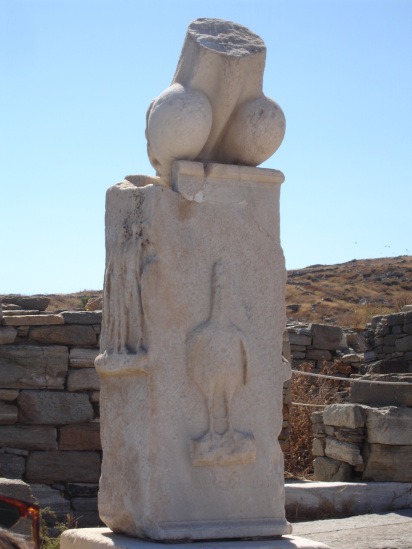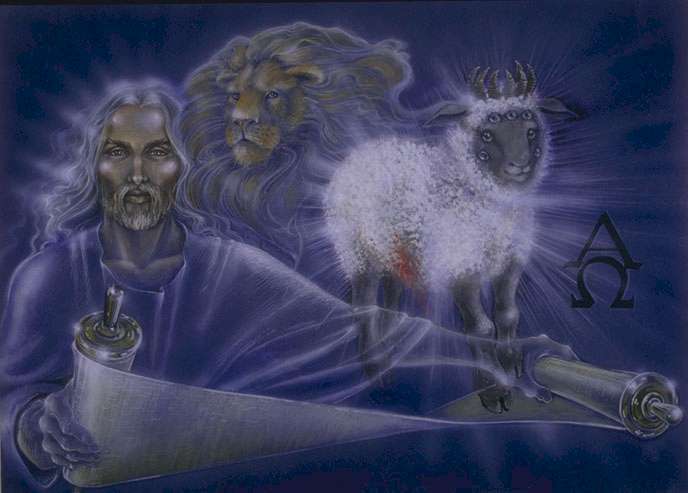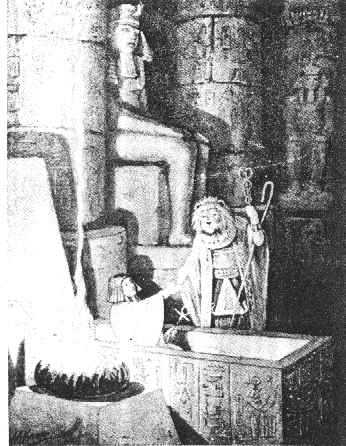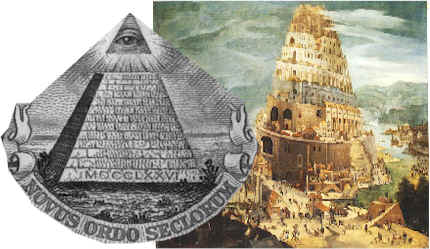The “Cutha tablet” was found in the ancient city of Babylonia. The text on the tablet gives an account of “creation” and speaks of a “temple of Sittam, ” in the sanctuary of Nergal, the “giant king of war, lord of the city of Cutha.” He is frequently invoked in the hymns and his symbols and characteristics we find in the inscriptions and texts of Babylonian, Assyrian, and Samarian rulers.
As I explained in my article, Nergal: The Lion-Headed Cock God of Babylonian Hell (Earth), Nergal was the Cock-headed and Lion-headed Idol of the Samaritan Hebrews who we also know by many other names such as the Kush, Cush, Kish, Cuthah, Cuthites, Cushite, Cutheans, and Babylonians – to name a few. So when you read these different names you need to understand that they were the same people who purposely babbled history, scripture, and mythology because that has been their main job as the Scribes of Chaos for well over the last 2,000 years.

For those of you who have not read my past research on the Cush, I have found that they were also known as the Sons of Seth / Sethians who descended from Egyptian Pharaoh Seth I (Sesostris or Set I) and eventually became the founders of the Phoenician empire and at a later date – the Roman empire.

The Cush AKA Gnostic Sethians were the main progeny for the pillar (phallic/cock) cult that we see all around the world today and even here in the U.S. with the cock of Washington and Cleopatra. Herodotus tells us Seth defeated an army without much resistance and then erected a pillar in their capital with a vagina on it to symbolize the fact that the army fought like women which was most likely the same pillar that Josephus said survived in his time.
This is why we find Nergal, the Cush, Sethians and Romans were had carried and were associated with pillars (phallic/cock) in whatever lands they had conquered and ruled. Once a land and people were taken, their cocks were erected and sperm of their descendants was spread into the remaining concubine vaginas to establish their new hybrid/Hyksos empire.
As I mentioned earlier, Nergal was first mentioned as the god of the city known as Cuthah (Cuth/Kuth), and his association with this city is referred to in the Old Testament (II. Kings xvil. 30). He is mentioned in 2 Kings xvii, and the Babylonian Talmudic treatise Sanhedrin (fol. 63, p. 2) which states that the men of Cuthah made Nergal their god.
“And what was it? A cock.”

I find it interesting that they chose the cock which we call today a rooster and lion as their main symbols to represent Nergal and also aligned their souls with a God who they claimed was in charge of war and plagues. But when you really think about it, if you are trying to conquer the world, it makes perfect sense to get the God of war and plagues on your side so that you can use him to smite your foes and clear the land in a hurry.
I have found that there is probably a no better way to manage and rule the world than to use secret biological warfare via parasitical fungi/molds and their sovereign ruler – Nergal which have the ability to control, maim and kill your foes unbeknownst to them.
It was said that the Persians, Arabians, and Indians called the palm-tree – nergil, by of which they report strange things and we find that Nergal is in god lists, the god of the underworld named “King of the Palm Tree” (Lugal-gisimmar).
NERGAL IN BABYLONIAN HISTORY
In my opinion, the Babylonian texts reveal to us a treasure trove of hidden history, human biology, microbiology and spirituality that seems to prove that some of the stories in the Scripture are true and also these same people are the ancient Brotherhood of Magi that existed between Ancient Egypt and Crete for thousands of years.
Assyrian documents of the 1st millennium BC describe Nergal as a benefactor of men, who hears prayers, restores the dead to life, and protects agriculture and flocks. Hymns depict him as a god of pestilence, hunger, and devastation. The other sphere of Nergal’s power was the underworld, of which he became king. According to one text, Nergal with his demon escorts descended to the underworld where the goddess Ereshkigal (or Allatum) was queen. He threatened to cut off her head, but she saved herself by becoming his wife, and Nergal obtained kingship over the underworld.”
According to the Babylonian theory of the manifestation of the divine power in cosmos and cycle, Nergal represents the Underworld, AKA Hell or lowest part of the cycle ie; Modernity as “King of the Beasts,” in which he is the “Lord of the great Dwelling-place,” that is, of the realm of Death. He is also most appropriately called the ” raging king,” the “furious one.”
In Christianity, Nergal later appears to take on the form of Simon Magus who is surnamed Saint Peter and Satan – the Father of the Galileans and King of Hell ie: The Modern World. This makes sense given the fact that the same Babylonian scribes who wrote about Nergal were the progenitors for the later Babylonian scribes of Rome.

The same family. The same story. Just the names have been babbled to create a confusion of tongues which was always the goal as they tell us in Genesis;
And the LORD said, “If they have begun to do this as one people speaking the same language, then nothing they devise will be beyond them. Come, let Us go down and confuse their language so that they will not understand one another’s speech.” So the LORD scattered them from there over the face of the whole earth, and they stopped building the city.…”
We find Nergal in the Gilgamesh Epic (q.v.) where he opens the earth and brings up the spirit of Eabanland is listed as a god of plague and war Glr-ra with fourteen demons to assist him on his mission. He sends the plague-demon called Namtar to announce his arrival to Allatu who is obliged to admit him. Nergal then drags her from her throne intent on killing her, but when she bursts into tears and offers to become his wife and to place “the tablets of wisdom” in his hands, he spares her.
By doing so, he becomes the God of Knowledge (Gnosis) and protector of the “tablets of wisdom” and his descendants of chaos as the protectors of the king.
A role we see played today by national security apparatuses of the Deep State of the world such as the CIA and NSA in the U.S. and FSB in Russia. As the Mother of the CIA, James Jesus Angleton once said, “Deception is a state of mind and the mind of the State.”

Nergal is also associated with the god of the chase with his symbol of the lion and is often shown as a chimera type figure being that of man-lion and what we call today the Sphinx. The Semitic name for Nergal was Arin or Erin, a word which signifies “lion” in Hebrew and Syriac.

His descendants, The Cush – AKA Sons of Seth, AKA Samarians, AKA Babylonians, AKA the Aryan or Arian race who we find the Aryans all over the world such as in the names of the Island of Erin in Ireland which is named after their Aryan founders and the Arii of Germany, of the Ases of Scandinavia, and of the Island of Erin (Ireland).
We also have the Lion of the Tribe of Judah and in Christianity refers to Jesus Christ, the Messiah. In Matthew 1:1–6 and Luke 3:31–34 of the New Testament, Jesus is described as a member of the tribe and Revelation 5:5 also mentions an apocalyptic vision of the Lion of the tribe of Judah.

I have discovered the man-lion of the Cutha in the traditions of Gnosticism with the Yaldabaoth and the Demiurge who are depicted as a lion-faced figure or serpent and also the Lion-headed Chnoubis, The same symbol of lion we can now find in their Gnostic descendants, the Freemasons.

Who we find have the ritual of “The Lion of the Tribe of Judah” and the famous Lion’s Paw which is the most important message of the Third Degree.

Let us not forget that the Masons are the masters of ORDO AB CHAO.

In the astral-theological system, Nergal is said to be associated with the planet Mars, while in the ecclesiastical art, we find his symbol of the great lion and on boundary-stone monuments surmounted by the head of a lion serving as guardians to the temples and palaces.
The Cutha tablet allegedly found at the library of Nineveh originally written for the great temple of Nergal at Cutha show Nergal the destroyer, who is represented as sending out the hosts of the ancient brood of chaos to their destruction.

The text also shows Nergal’s armies of chaos came into existence. The words are put into the mouth of Nergal and were written for his great temple at Cutha.
“On a tablet none wrote, none disclosed, and no bodies or brushwood were produced in the land; and there was none whom I approached.
Warriors with the body of a bird of the valley, men with the faces of ravens, did the great gods create.
In the ground did the gods create their city.
Tiamat (the dragon of chaos) suckled them. Their progeny (sasur) the mistress of the gods created.
In the midst of the mountains they grew up and became heroes and increased in number. Seven kings, brethren, appeared and begat children. Six thousand in number were their peoples. The god Banini their father was king; their mother was the queen Melili.”
To be continued…

Moe is the founder of GnosticWarrior.com. He is a father, husband, author, martial arts black belt, and an expert in Gnosticism, the occult, and esotericism.







